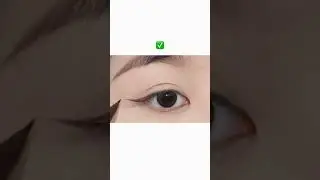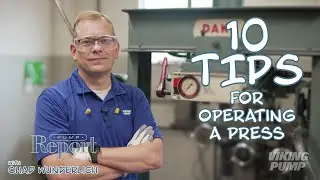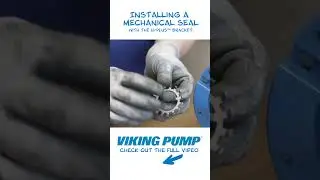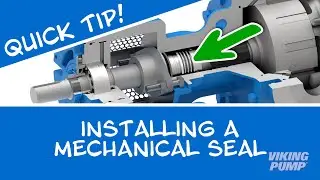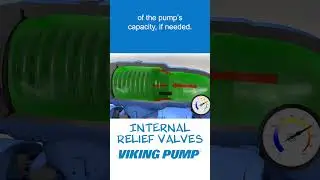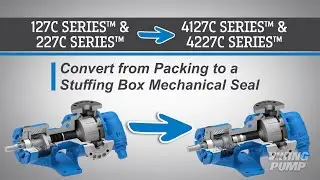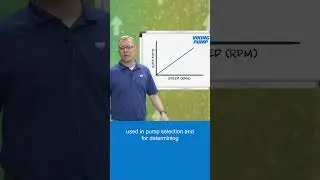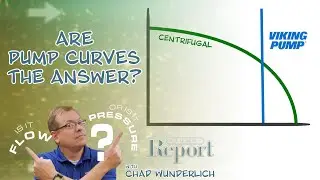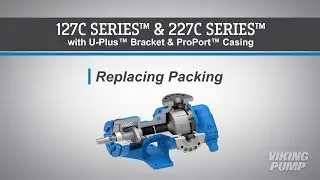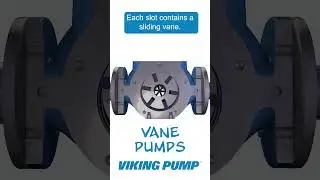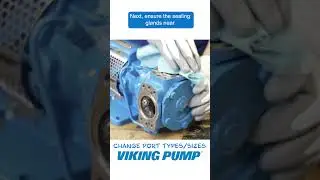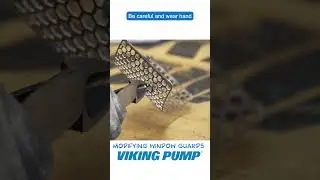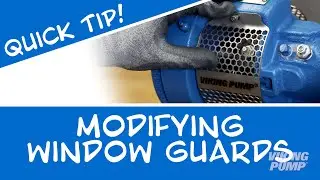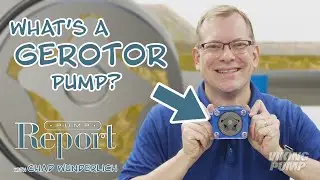Repairing Pumps? You need these tools.
Have questions? We'd love to chat! Send us a message here: https://www.vikingpump.com/yt
In this Pump Report, Chad goes over the must-have and nice-to-have tools that are used for repairing rotary positive placement pumps. To learn more or view other Pump Reports, please visit our website at vikingpump.com.
#VikingPump #repair #tools
▬ More Videos ▬▬▬▬▬▬▬▬▬▬▬▬
► All Viking Pump Videos: / vikingpumpinc
► Subscribe to Viking Pump Channel: https://bit.ly/2KJGmJT
▬ Social Media ▬▬▬▬▬▬▬▬▬▬▬▬▬▬▬
► Facebook: / vikingpump
► LinkedIn: / viking-pump
► Website: http://www.vikingpump.com
Like any job, you need the right tools to do it well - and the same is true for repairing or servicing positive displacement pumps. Today let's talk about the tools of the trade used for doing this. You're watching the Pump Report
There are a number of different tools necessary for working on pumps, but most of these you likely already have on hand: A reliable ratchet and socket set, both SAE and metric, as well as deep bore sockets. These are needed for tasks like tightening cap screws or nuts or for the tightening or removal of lock nuts on certain Viking sizes.
And along those lines, you'd better add a torque wrench, as well. For many products, they require specific torque settings to ensure a strong hold.
And next are box end wrenches, both in SAE and metric. These wrenches are useful when it comes to getting into tight spaces where a socket can't be used like underneath the relief valve or in the seal area.
Then we have hex head wrenches, commonly known as Allen wrenches. These are required for socket-head set screws commonly found in seals and bearing housings on certain pump models.
And lastly a soft-headed hammer - because sometimes you need a little gentle persuasion. A rubber mallet is a great tool to aid with pump disassembly.
This next set of tools is a little less common but should still be found in any shop working in the repair of pumps. Snap ring pliers are required for the installation or removal of snap rings. They come in two variations: external and internal. External snap ring pliers are required for snap rings on shafts. Internal snap ring pliers are required for snap rings in casing bores or bearing housings.
For packed pumps a packing hook is also important. The miniature corkscrew at the end is the best way to extend your reach to grab hold of each packing ring to remove it from the stuffing box.
Spanner wrenches may also be required. These come in two variations: a two pin, or face spanner wrench has pins that can be inserted into corresponding holes on the face of the bearing housing of a pump in order to turn it to tighten or loosen. A hook nose spanner has an adjustable hook that can be used to grab the slot of slotted lock nuts. It can also be used to check the rotation of a pump by grabbing onto a shaft's keyway to rotate the shaft.
Often overlooked but still important - a piece of brass, hardwood, or plastic. This is a simple piece of material that is softer than the pump internals. When inserting into the pump, we can prevent the shaft from turning while preventing any damage to the pump internals.
Finally, feeler gauges. Rotary positive displacement pumps feature very tight clearances. Feeler gauges allow for accurate measurement of these tight clearances inside the pump.
Lastly, there are a few special tools that are required for only a few models of Viking pumps. Since these are special tools these are provided with the respective repair or seal kits for these models. Certain Viking Pump models have a step on the shaft. A tapered seal installation sleeve is required to help the seal get over the step and prevents any damage to elastomeric parts of the seal.
Viking hygienic lobe pumps feature a cross slot in the rotor retainer. A special cross socket is provided with seal kits to allow for removal or installation of these without damage.
For TRA®10 pumps, Viking Pump provides a special wrench. This wrench includes slots for removing the front cover wing nuts and the rotor retainer nuts.
And there you have it. There's a tool for every job - these are the ones required for doing pump repair. To view other videos on repair of your specific Viking pump or to view other pump reports please visit our website at vikingpump.com.


